Menu
Diamond Moments: ‘Don’t Go Breaking My Heart’

We are selecting Diamond Moments from Elton’s 50-year career to celebrate the November 10th release of Elton’s ultimate greatest hits collection, Diamonds.
On June 21, 1976, Elton released his 24th single in the UK and 22nd in the United States. It became his first #1 single in Britain and stayed on Billboard’s Top 40 in America for 15 weeks – eight of them in the Top 10 and four at #1.
Don’t Go Breaking My Heart, included on Elton’s upcoming Diamonds greatest hits release, wasn’t just a defining moment for fans during the summer of the American Bicentennial and a brutal British heat wave, it also made a lasting mark on the lives and careers of those who worked on the recording…most notably singer Kiki Dee and keyboardist/arranger James Newton Howard.
While Kiki was a known entity before she was asked to duet on the track (having already done two albums on Elton’s Rocket Records label and enjoying chart success with Amoureuse and I’ve Got The Music In Me), her visibility rose considerably following its release. To this day she honors the song by including it in her live sets with guitarist Carmelo Luggeri.
Kiki: ”People have got a lot of fondness for that song. I did a guest spot at a big music festival…and when the other acts were playing I went out into the audience. A lot of people told me how much the song meant to them. One was an Indian guy who’d come over in 1972, and Don’t Go Breaking My Heart was his favorite song ever. It was very, very sweet.”
James Newton Howard had been a member of the Elton John Band for less than a year when Don’t Go Breaking My Heart was recorded. He had previously done some arrangements for Melissa Manchester but the prominence of his string charts on an Elton John hit single most certainly laid the groundwork for his becoming one of the premiere film composers working today.
James: “I didn’t study orchestration in school, I kind of just learned by myself. I was a classical piano student, so I knew how to read and write music. And I just sort of knew that I would be able to arrange for strings. That song was one of the first things I’d ever done.”
Don’t Go Breaking My Heart‘s backing tracks were recorded at the end of the Blue Moves sessions in Toronto, Canada, in early 1976. Having completed one of his most adventurous albums to date, Elton took hold of a very catchy musical idea and ran with it…eventually asking Bernie Taupin to write lyrics around the melody and title phrase.
Producer Gus Dudgeon: “Elton didn’t have a lyric for it. It was so weird to see him writing a song in the studio with no lyric. I’d never seen him do it before. And all he was singing was ‘Don’t go breaking my heart. Don’t go breaking my heart. Don’t go breaking my heart. Don’t go breaking my heart. Don’t go breaking my heart…’ That’s what he sang all the way through!”
The songwriting credit went to pseudonyms that Elton had devised for himself and Bernie during the Rock Of The Westies album, “Ann Orson and Carte Blanche” (a mash-up of the phrase “A horse and cart” and “Carte Blanche”, the name of a prestigious credit card at the time). During its writing and recording, the song was nestled firmly in the embrace of the Tamla/Motown sound: a nine-years-on follow-up to the 1967 classic Ain’t No Mountain High Enough and other duets by Marvin Gaye with female artists on the Detroit-based label. A label, by the way, which had signed Kiki Dee as its first white artist in 1970.
Elton and I are both the same age (three weeks apart), and we grew up on Marvin Gaye, Tammi Terrell, Kim West and the Tamla/Motown duets.
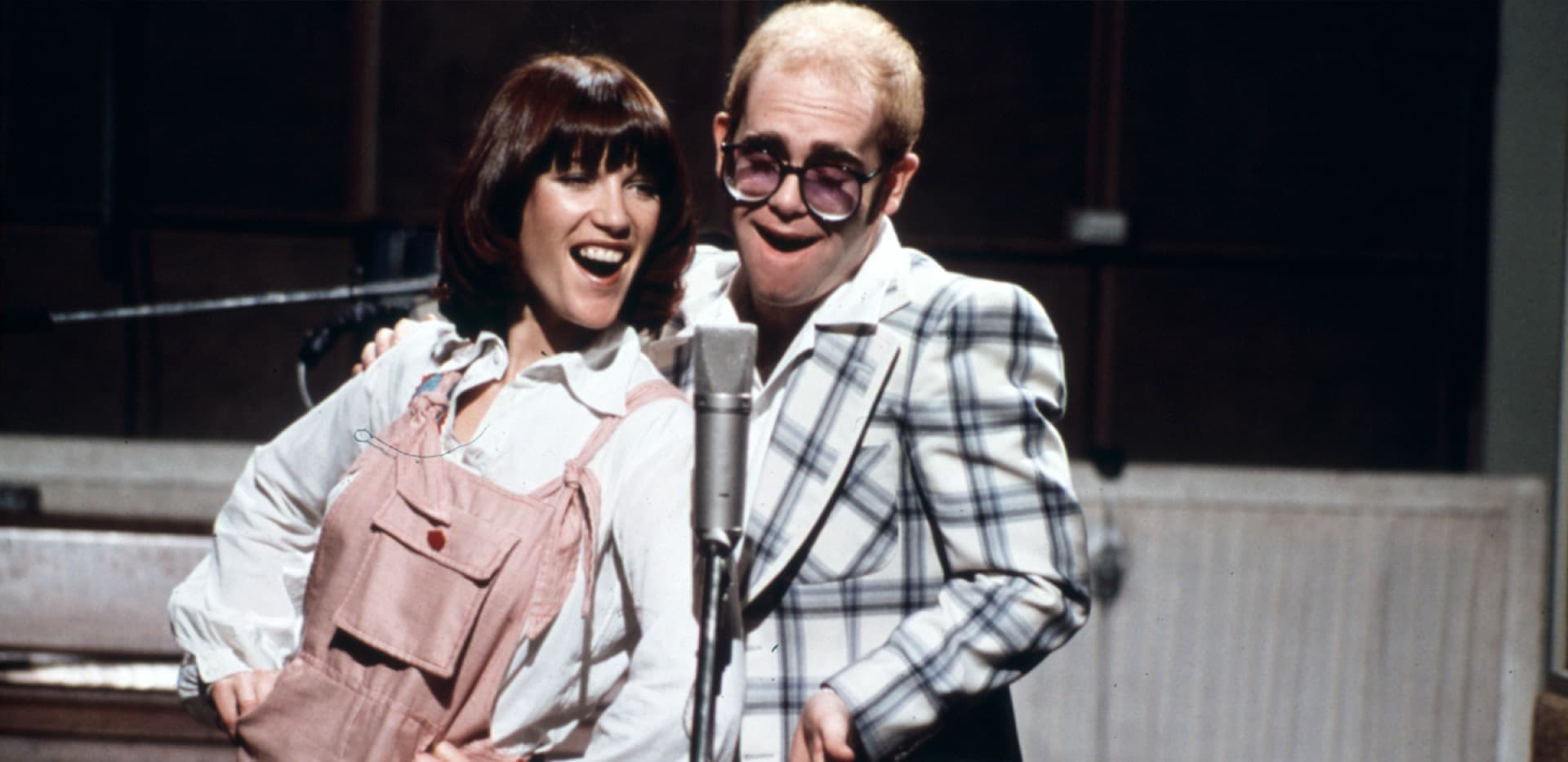
Elton and Kiki on the shoot for 'Don't Go Breaking My Heart'
1 / 3
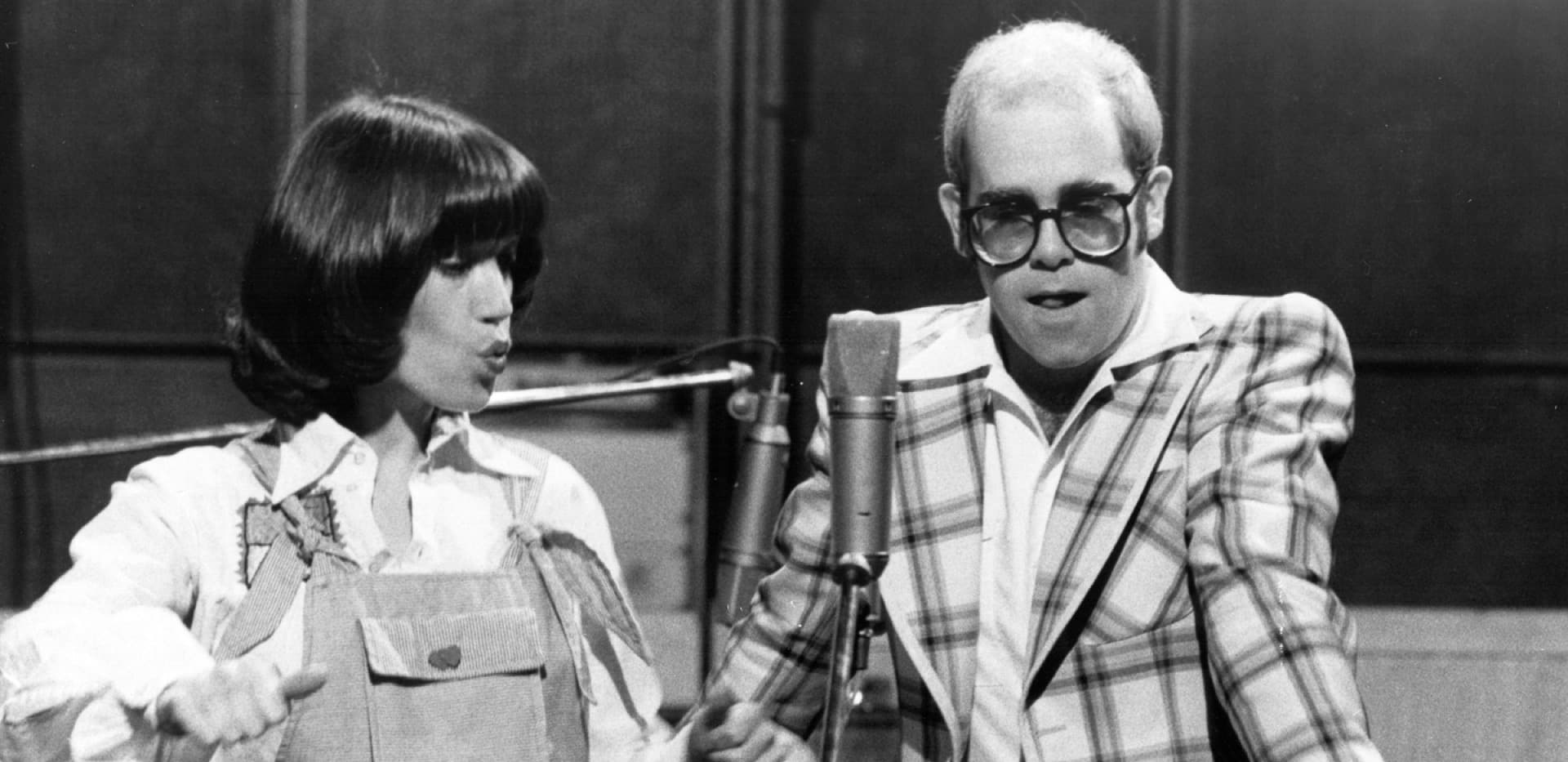
Elton and Kiki on the shoot for 'Don't Go Breaking My Heart'
2 / 3
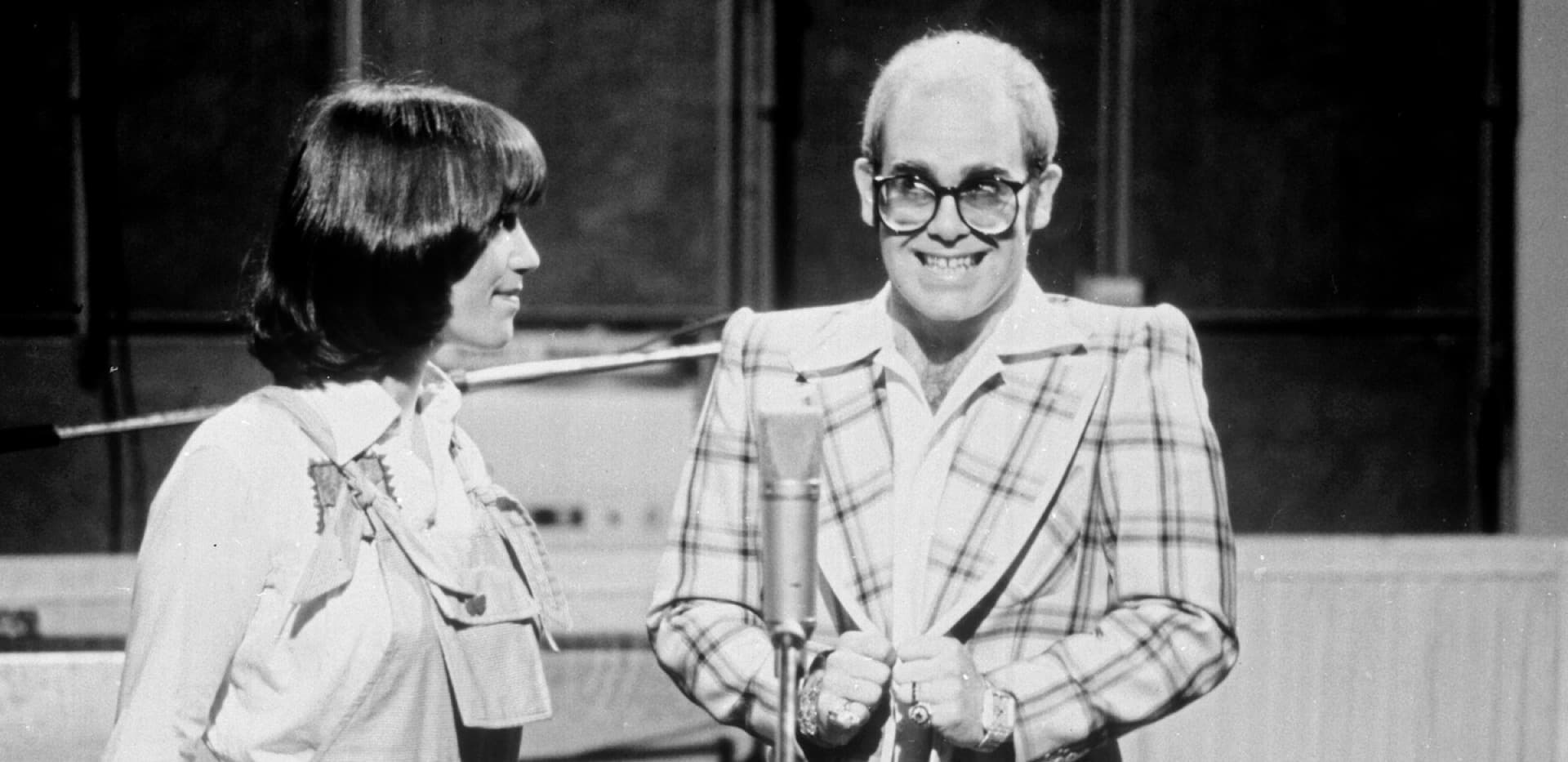
Elton and Kiki on the shoot for 'Don't Go Breaking My Heart'
3 / 3
James: “It definitely had a lot to do with the tradition of Motown strings and things like My Girl. The one thing I remember Elton saying is, ‘You should do a string solo.’ The solo in the middle is full orchestra, so that was kind of fun.”
James’ transition from second-keyboardist in Elton’s band to orchestral arranger came about with the help of percussionist Ray Cooper.
Gus: “I remember clearly, Ray just suddenly turned to me one day and he said, ‘You know, you really ought to give James a chance to do some orchestral arrangements…he’s really good. He knows his stuff.’ And a good thing too…it’s a bloody good arrangement.”
James: When I first joined the band Ray kind of took me under his wing. He was a classical music guy and we talked a lot about orchestration and classical music in general. I think I expressed to him my ambition to be able to do that with Elton. Having been a huge fan of Paul Buckmaster – he wrote the greatest string charts ever for Elton, in my opinion. And Gene Page’s extraordinary orchestration. Del Newman was great. So there was a tradition of great orchestrations in his records and it was something I was excited to attempt to do. And I went to Elton and asked him if he would consider letting me do it on the Blue Moves album. He said, ‘Well, let me think about it.’ And he must have conferred with Ray at some point. He came back to me and said, ‘Yeah! You can do it.'”
Kiki’s path to the project was with a bit less direct involvement: “Elton had produced my first album for Rocket (Loving and Free) in 1973, and we toured together in 1974. So perhaps when they came up with this song they thought “Well, it’d be nice to get Kiki on this’…’cos I was in his life. It was pretty informal. It’s interesting how something you approach with such a casual attitude – like the video (which was done in a couple of takes for a TV show), who would have thought that would have been played so much over the years?”
After Elton and the band were done in Toronto, Kiki taped her vocals to the backing tracks in a London studio: “I remember getting a copy of it with Elton singing his vocal, and also doing my part in a high voice! I worked hard on my parts. Elton had already stamped the song with his vocal, which in a way is quite good, ‘cos it gives you a groundwork on how you’re gonna sing it. The precedent has already been set by him, and the writing and production of the song. I seem to remember working quite hard to get the right attitude. Good vocals are always hard work.”
The finished song is one of the denser that Elton had done to that point. On the 23 tracks recorded, including two vocalists, backing vocalists, and seven band musicians, there was an orchestra of 12 violins, 4 violas, and 4 cellos. This left little breathing room, especially in the pre-CD days where vinyl singles had to survive the test of 45 rpm and transistor radio speakers. This could have been intimidating to the new kid on the conductor’s podium, but James was not daunted.
James: “I just completely ignored all of that. I wrote the arrangement on piano and then wrote it down on paper: the old-fashioned way. There were no sequencers back in the day. Well, there were, but there was no way to sync them to tape. So I just plunked it out on the piano, wrote it down, sent it to the copyist and that was it.”
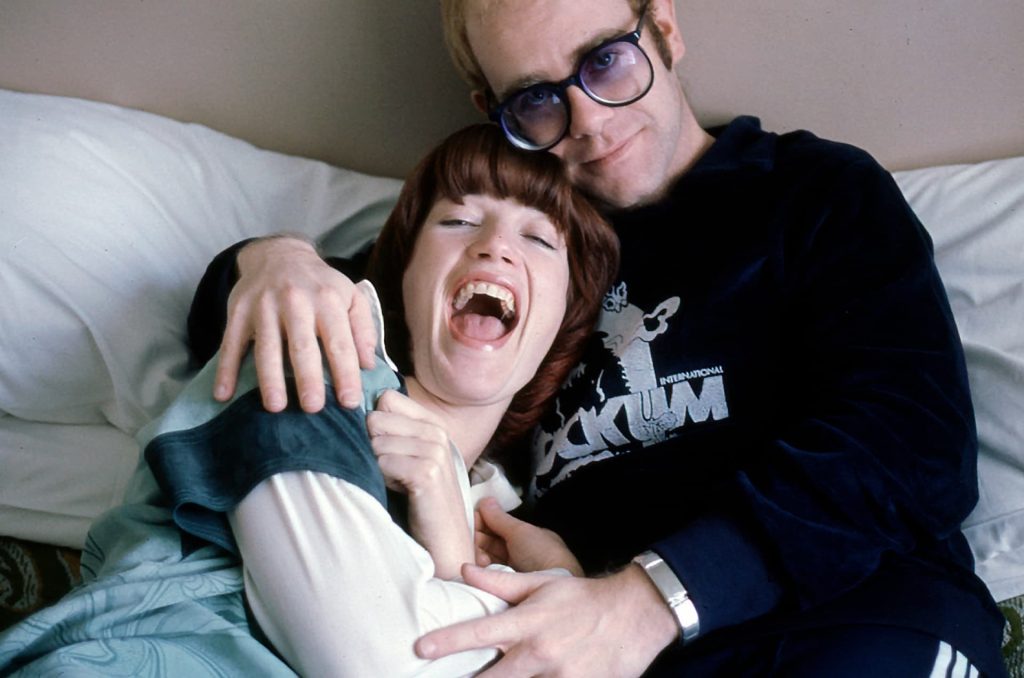
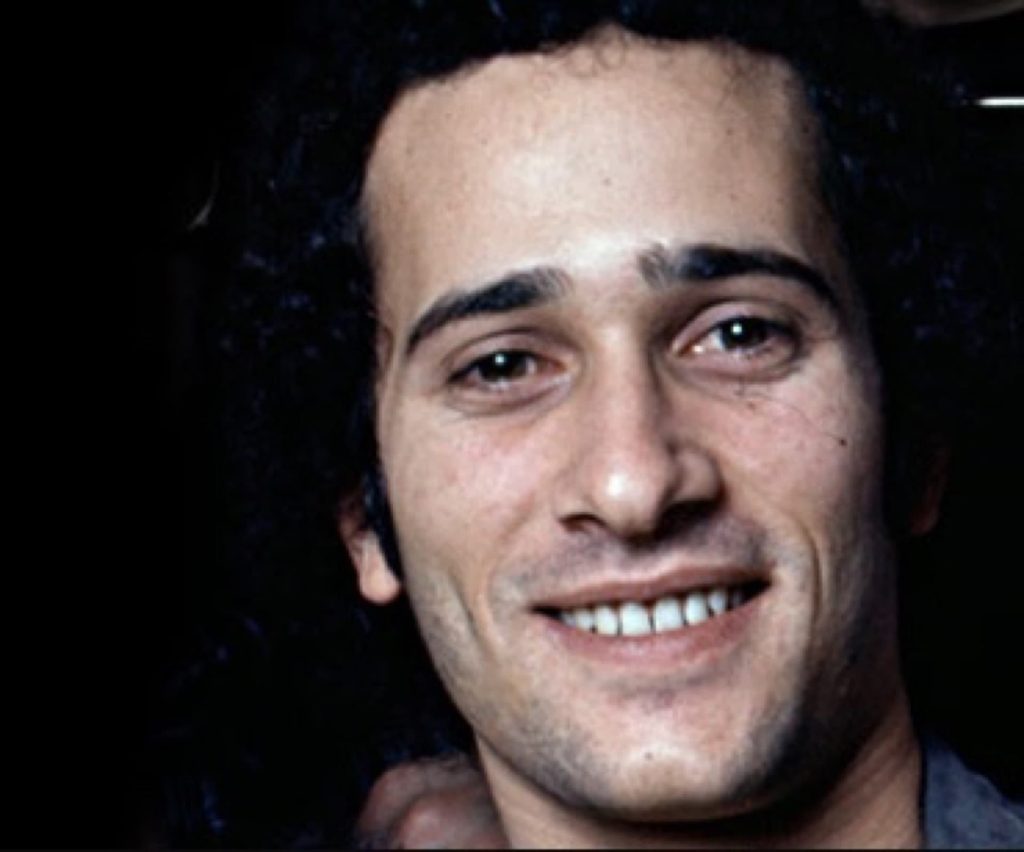
(Top) Elton and Kiki Dee in 1976. (Photo: David Nutter)
(Bottom) James Newton Howard in 1976. (Photo: David Nutter)
(R) Elton and Kiki Dee in 2017. (Photo: Mark Giles).
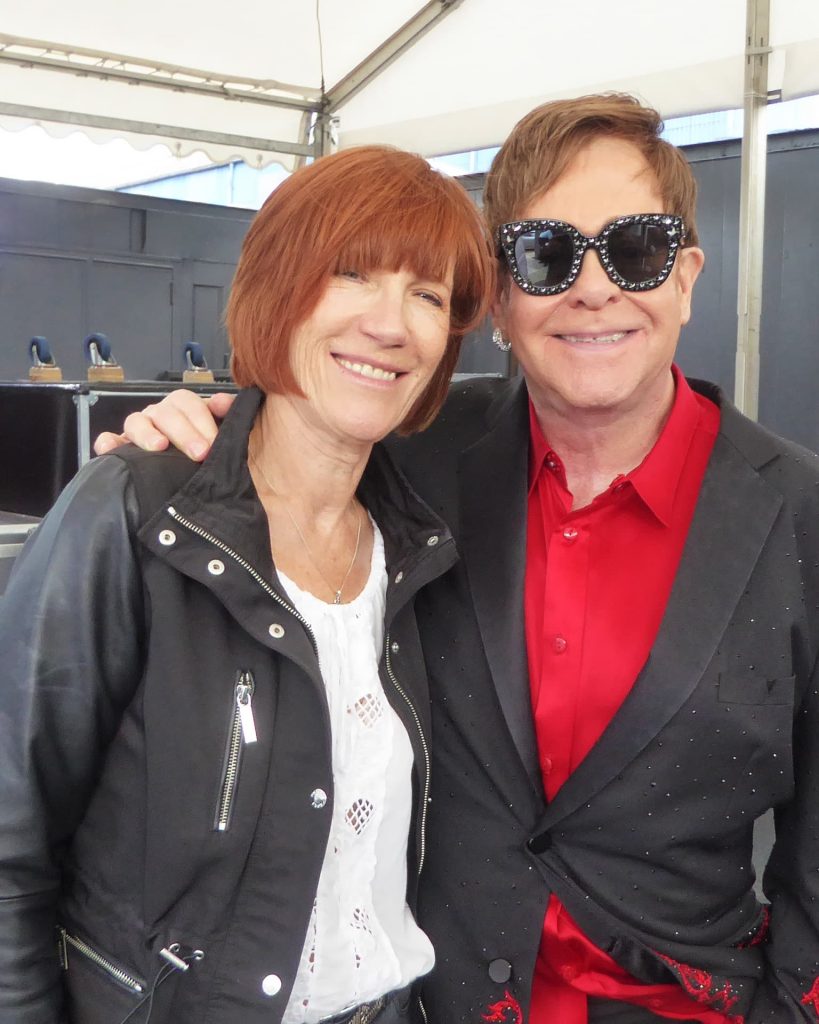
Don’t Go Breaking My Heart quickly lived up to its pop potential upon its release, reaching the top of the US Hot 100 chart on its sixth week (August 7, 1976).In the UK it leapt up to #1 on the UK singles chart in just three weeks.
In the UK it leapt up to #1 on the UK singles chart in just three weeks and stayed there for a month and a half.
Gus: “It gave me a buzz because you could tell straight away that the song was really commercial. Really vibey and up.”
Kiki: “I remember hearing it on the radio for the first time and thinking, ‘Wow.’ ‘Cos some records, especially in those days, they have to sound great on the radio…and this was one of those records that did. I remember thinking, ‘Oh, this could do okay…this could go.’”
And “go” it went…
Kiki: “I was terribly proud for my mum and dad…’cos they’d stuck with me. I started professionally when I was 17 years old, and this was over ten years later. So I was so pleased for them. And Elton was chuffed. He had a little gold heart necklace made for me, which said, ‘Don’t go breaking my heart.’ I’ve still got that.”
It was exciting! I remember on the cover of one of the bigger music magazines there was a review and it mentioned my string arrangement, which I was very excited about. That was really a fun time.
Since that time, Don’t Go Breaking My Heart has continued to thrive in popular culture in any number of ways: Elton himself has recorded versions with Miss Piggy, Minnie Mouse, and RuPaul…and self-confessed Elton fanatic Valerie Bertinelli sang as Elton (with Mackenzie Phillips playing Kiki) on an episode of the popular television sitcom, One Day at a Time the winter after the single’s release.
And anyone who has ever fired up a Karaoke machine has probably either sung or heard the song at some point. Including Kiki Dee: “We had a Christmas Karaoke and Carmelo’s brother-in-law and I sang it…after many drinks…and I couldn’t hit any of my notes! And I was saying, ‘Blimey, did I do it in this key?’”
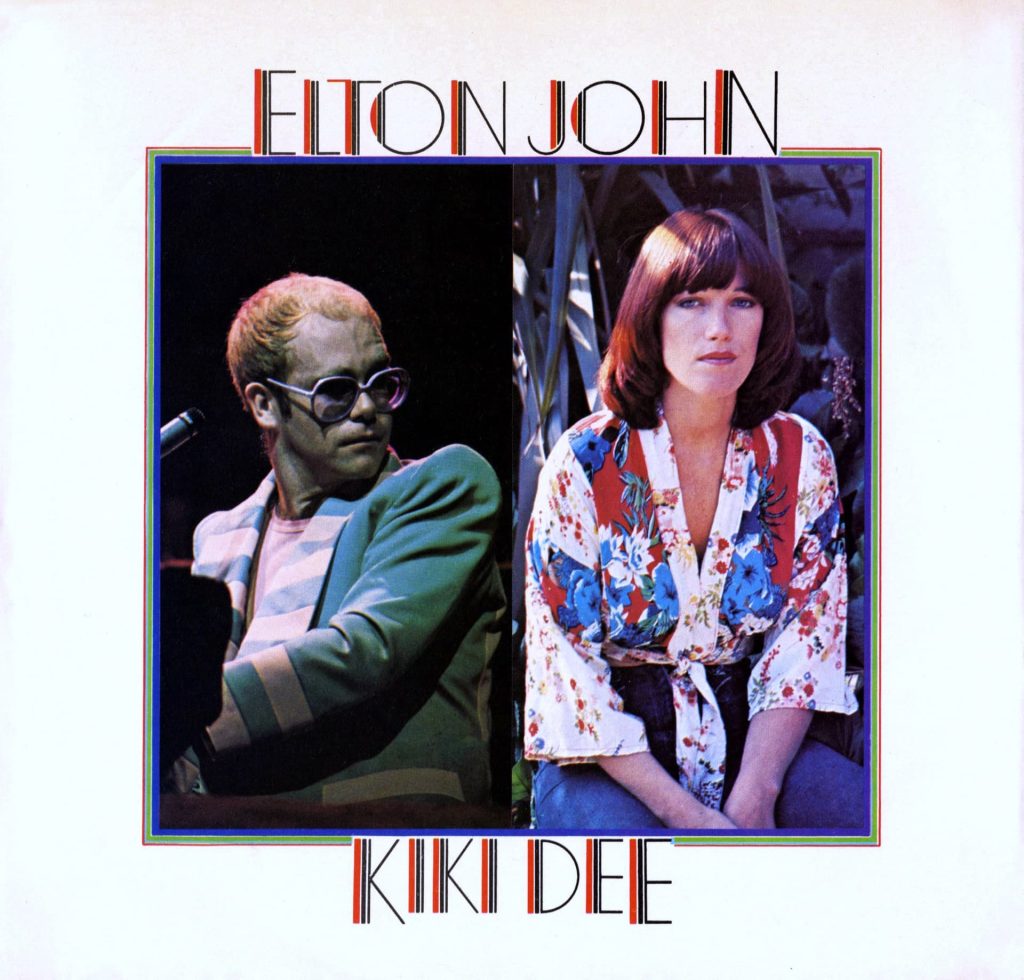
(Interviews: Gus Dudgeon – May 1993, Kiki Dee – June 2011, James Newton Howard – August 2011)
